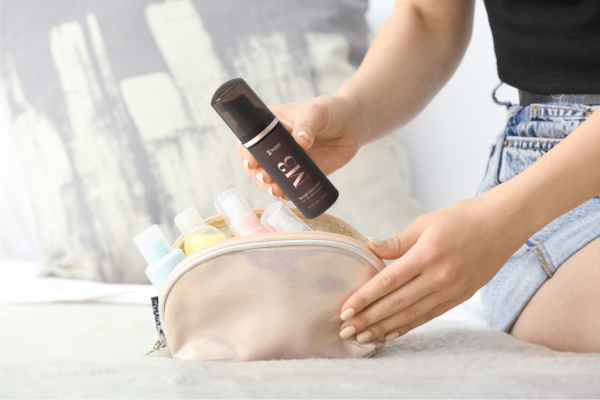
Since 2020, e-commerce has seen significant year-over-year increases. As of March 2022, e-commerce sales increased 27% compared to the previous year, according to McKinsey. Virtually every consumer category has been impacted by this trend, and beauty and personal care products are no exception.
In 2020, 16% of global beauty value sales were made online, which is only projected to grow faster in the years to come[1]. All of this has beauty and personal care brands ramping up their digital activity and re-evaluating the design and function of their products to account for shifting consumer buying and usage habits.
E-commerce Trends Impacting Beauty and Personal Care Products
Light Weight, Durability Remain Paramount
Arguably the most important aspect of e-commerce design is making sure the product gets to its destination in one working piece. This is especially critical for liquid products, as is the case for many beauty and personal care items.
Weight not only contributes to a solution’s durability, but also its shipping cost. The heavier the product, the more likely a component will be damaged should it be dropped or slammed during transit. Heavier products also require more resources to safely transport throughout the supply chain, which drives up shipping costs. This is a key reason why retailers like Amazon have established packaging certification guidelines, incentivizing brands to design products and packaging that put less strain on both shippers and customers.
Subscription Beauty Boxes on the Rise
Subscription services have grown in prominence over the past decade, but the pandemic was a catalyst for their recent popularity. According to Statista, 11% of U.S. female cosmetic customers subscribe to a beauty box service, and another 40% have expressed interest in trying one.
Beauty subscription services allow consumers to discover new products in the comfort of their home. These subscriptions also offer a way for consumers to discover new products, relying on the expertise of these services to curate boxes that meet their personal preferences. Millennials and Gen Z – the most digitally connected consumers – are the main users of subscriptions services. Of those who subscribe to a beauty box, 17% are between the ages 18 and 29.
Packaging Solutions Brands Should Consider to Take Advantage of These Trends
Foamers
Foamer solutions meet a variety of benefits important to both brands and consumers. They are great for smaller, travel-friendly items such cleansers and make-up removers, while also functional for table-top applications like hand soap or body wash. Foamers are also well-suited for hand sanitizers, which many individuals still believe are important to keep on hand. Particularly for on-the-go usages, foaming pumps that offer easy actuation in combination with an internal lock or overcap, like our M3 pump, are paramount in providing a clean, controlled dispensing experience. Messes and overall product difficulties can easily sour a person’s time when they’re out and about.
Additionally, foamers also align well with the brands and consumers’ shared sustainability interests. Consumers use significantly less water when using a foamer compared to other dispensing options. Silgan Dispensing’s own testing showed that consumers used 22% less water with foam soap versus liquid hand soap. In addition to water conservation, we are modifying a lot of our designs with our LifeCycle™ Technology to be able to offer more fully recyclable solutions to our customers. Global consumers believe recyclable products are one of the most effective ways to reduce waste.
Samplers
Even though general health and safety concerns are on the decline compared to recent years, sustained online buying habits have consumers visiting storefronts with less frequency than they did pre-pandemic. For beauty and personal care products, the absence of the in-store experience presents some challenges for consumers. There’s only so much online descriptions and reviews can relay for products designed to interact with one’s senses. This is leading brands and retailers to offer alternatives to in-store sampling, such as products in smaller pack sizes and sampler-style designs.
This direction aligns well with consumers’ interests, especially those of younger generations, who are less inclined to use just one brand for a specific beauty product, like a fragrance. They like variety, having different options depending on a particular mood or occasion.
As is the case with any dispensing solution, form shouldn’t come at the cost of function. Even in smaller sizes, brands should still ensure that features like evacuation rate and smooth actuation remain on par with consumers’ expectations.
It’s undeniable that consumers’ online shopping habits have significantly impacted the beauty and personal care space. Not only the type of products, but how those items are designed and packaged both have seen a noticeable change in recent years. As this continues, it’ll be important for brands to explore solutions that are durable, available in different sizes, especially smaller amounts, and have little-to-no environmental impact.
[1] Source: Euromonitor International
